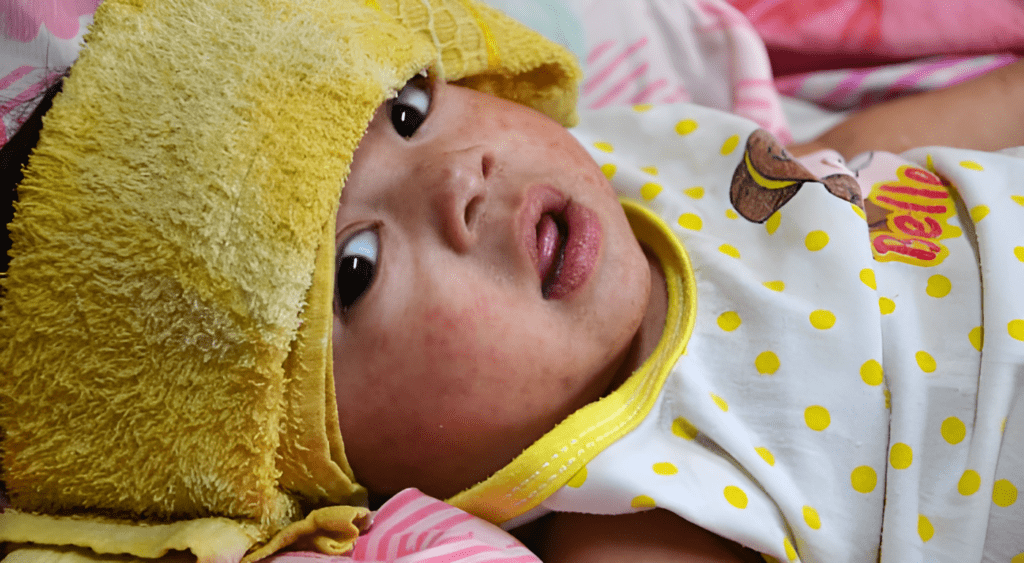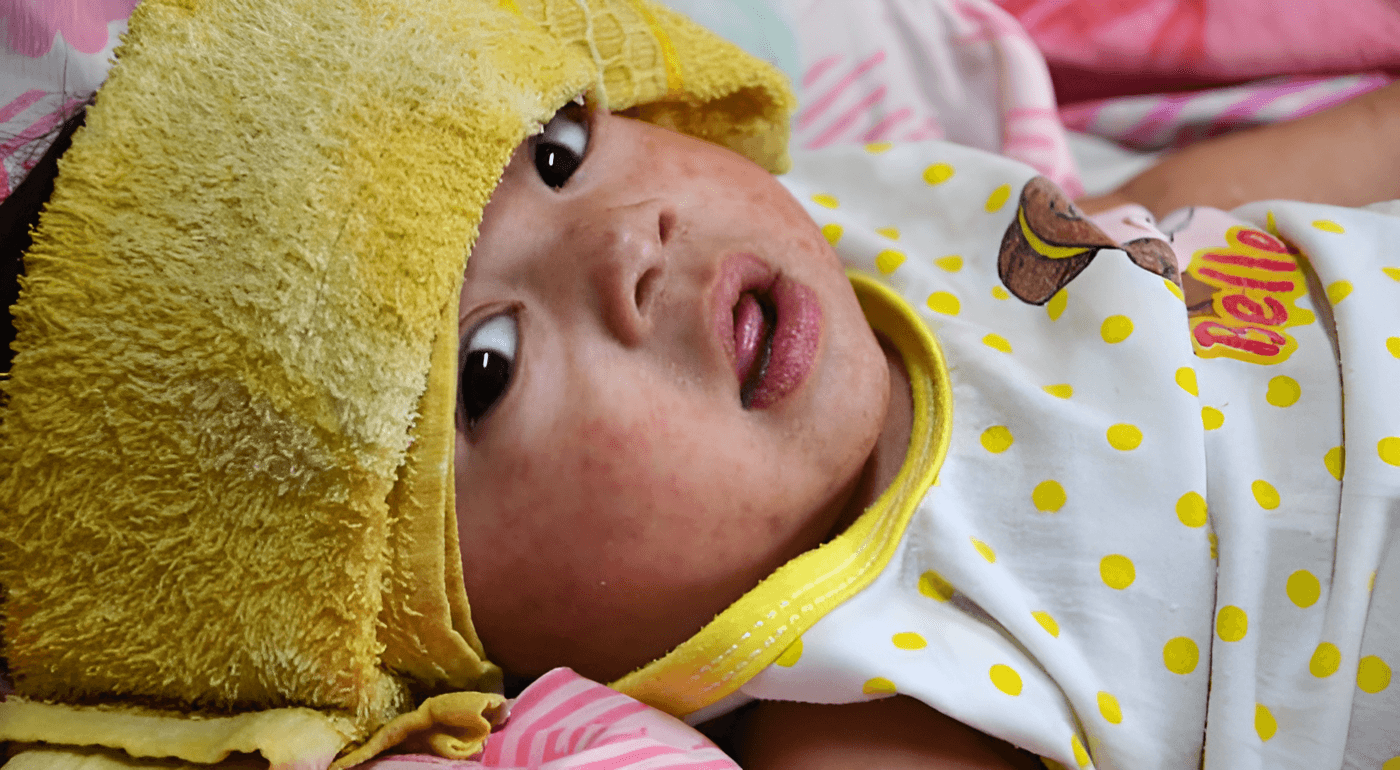
LUBBOCK, TX — In the quiet, sunbaked towns of Texas’s South Plains, a public health crisis is unfolding. What began as two isolated cases of measles in late January has ballooned into the state’s largest outbreak in over 30 years, with 58 confirmed cases and 13 hospitalizations. The outbreak, now spanning five counties, has exposed the fragility of herd immunity in an era of rising vaccine skepticism, globalized travel, and legislative policies that critics argue prioritize personal choice over collective safety.
The Outbreak’s Ground Zero: Gaines County
At the epicenter lies Gaines County, a rural region of 21,000 residents where tight-knit communities and sprawling farmlands mask a dangerous reality: childhood vaccination rates here hover near 70%, far below the 95% threshold needed to prevent measles spread. Of the 45 cases reported in Gaines County, 33 are children aged 5–17, many from unvaccinated families citing religious or philosophical objections.
“This isn’t just a medical crisis—it’s a social one,” said Dr. Laura Simmons, an epidemiologist with the Texas Department of State Health Services (DSHS). “Measles exploits every crack in our public health armor. In Gaines County, those cracks are widening.”
The outbreak began when two unvaccinated adults returned from a religious mission trip to Ukraine, where measles has resurged due to wartime healthcare disruptions. Within days, the virus infiltrated local churches, schools, and community gatherings. By mid-February, cases spilled into Terry, Yoakum, Lynn, and Lubbock counties, overwhelming rural clinics unequipped for infectious disease containment.
A Nationwide Surge Reflects Global Failures
Texas is not alone. The U.S. has recorded 695 measles cases across 22 states in 2025—the highest since the disease was declared eliminated in 2000. New York and Washington face large outbreaks, while Florida, California, and Georgia report smaller clusters. Globally, the World Health Organization (WHO) warns of a “tsunami” of cases, with over 300,000 infections this year, fueled by pandemic-era vaccination declines and conflict-driven healthcare collapses in regions like Ukraine and Sudan.
“Measles doesn’t respect borders,” said Dr. Céline Gounder, a CBS News medical contributor. “When vaccination rates dip anywhere, the virus finds a path everywhere.”
The Anatomy of a Crisis: How Measles Spreads
Measles is among the most contagious pathogens known to science. A single infected person can transmit the virus to 12–18 others in unvaccinated populations. The virus lingers in the air for up to two hours, turning supermarkets, classrooms, and churches into transmission hubs.
Timeline of Infection
- Days 1–10: Exposure to the virus, often through travel or community contact.
- Days 7–14: Initial symptoms—high fever (up to 104°F), cough, runny nose, and red, watery eyes.
- Days 14–17: Koplik spots (tiny white lesions) appear inside the mouth, followed by a red, blotchy rash spreading from the hairline.
- Contagious Period: From four days before rash onset to four days after.
Measles begins with fever and cough, followed by a distinct rash, per the CDC.
Vaccine Hesitancy: A Legislative and Cultural Quagmire
Texas law permits parents to opt out of school-required vaccines for “reasons of conscience,” a policy that has made the state a hotspot for nonmedical exemptions. Since 2016, the rate of conscientious exemptions in Texas schools has tripled, reaching 2.8% statewide—and exceeding 10% in Gaines County.
“We’re seeing entire classrooms where 20% of kids aren’t vaccinated,” said Mark Thompson, director of the South Plains Public Health District. “That’s a tinderbox for outbreaks.”
Critics argue that lax exemption policies, coupled with misinformation on social media, have eroded trust in the measles-mumps-rubella (MMR) vaccine. A 2025 KFF poll found 17% of U.S. parents now delay or skip childhood vaccines, up from 10% in 2023. Anti-vaccine influencers, some with large Texas followings, falsely link the MMR shot to autism—a myth debunked by decades of research.
“Fear of vaccines has outpaced fear of the disease,” said Dr. Peter Hotez, a Baylor College of Medicine virologist. “We’re reaping the consequences of that complacency.”
Find free MMR vaccines near you using the Texas DSHS clinic locator.
Inside a Measles Ward: Stories from the Frontlines
At Lubbock Children’s Hospital, 6-year-old Emily Martinez (name changed) lies in an isolation room, her small body covered in the telltale rash. Her parents, devout members of a local church that discourages vaccinations, now grapple with guilt.
“We thought natural immunity was God’s plan,” said her father, voice trembling. “Now I’m watching my daughter fight for her life.”
Emily is one of 15 children under age 5 hospitalized in the outbreak. Infants too young for vaccination are especially vulnerable; measles can deplete their immune systems for years, a phenomenon called “immune amnesia.”
The Public Health Response: Mobile Clinics and Quarantine Orders
Texas health officials have launched a multi-pronged counteroffensive:
- Mobile Vaccination Units: DSHS deployed RVs to remote towns, offering free MMR shots. Over 1,200 doses were administered in Gaines County last week.
- School Audits: Health workers are reviewing immunization records in 12 school districts, urging parents to update vaccinations.
- Quarantine Mandates: Unvaccinated students exposed to measles face 21-day home quarantines.
“We’re fighting misinformation with science,” said Dr. Emily Carter, DSHS Commissioner. “But we’re also racing against the virus’s clock.”
The Economic and Social Toll
The outbreak has strained rural healthcare systems. Seminole Medical Center, a 25-bed facility, diverted non-emergency cases to Lubbock after its isolation wards filled. Schools in Terry County closed for a week, costing working parents wages.
“This isn’t just a health issue—it’s destabilizing entire communities,” said Gaines County Judge David Perkins.
The Road Ahead: Policy, Prevention, and Public Trust
Lawmakers in Austin are debating stricter vaccine exemption laws, mirroring policies in California and New York. Proposed bills would eliminate nonmedical exemptions and require parental counseling before opt-outs.
Meanwhile, DSHS is partnering with faith leaders to combat misinformation. At a Gaines County church, Pastor John Michaels recently preached about vaccination as a “moral duty,” citing Biblical calls to protect the vulnerable.
“We’re bridging the gap between faith and science,” he said.
The CDC advises MMR vaccination within 72 hours of exposure. CDC Post-Exposure Guidelines
What Texans Need to Do Now
- Check Vaccination Records: Ensure children have two MMR doses (12–15 months and 4–6 years). Adults born after 1957 should confirm they’ve had at least one dose.
- Post-Exposure Care: If exposed, unvaccinated individuals can receive the MMR vaccine within 72 hours or immune globulin (IG) within six days.
- Isolate Symptoms: Fever and rash require immediate medical evaluation. Call ahead to avoid exposing others.
A National Warning
The Texas outbreak serves as a grim preview of a post-vaccine America. Before the MMR vaccine’s 1963 debut, measles killed 400–500 Americans annually, mostly children. Today, as trust in institutions wanes, experts warn that preventable diseases could reclaim lost ground.
“Measles is a canary in the coal mine,” said Dr. Anthony Fauci, former NIAID director. “If we fail here, what’s next?”


